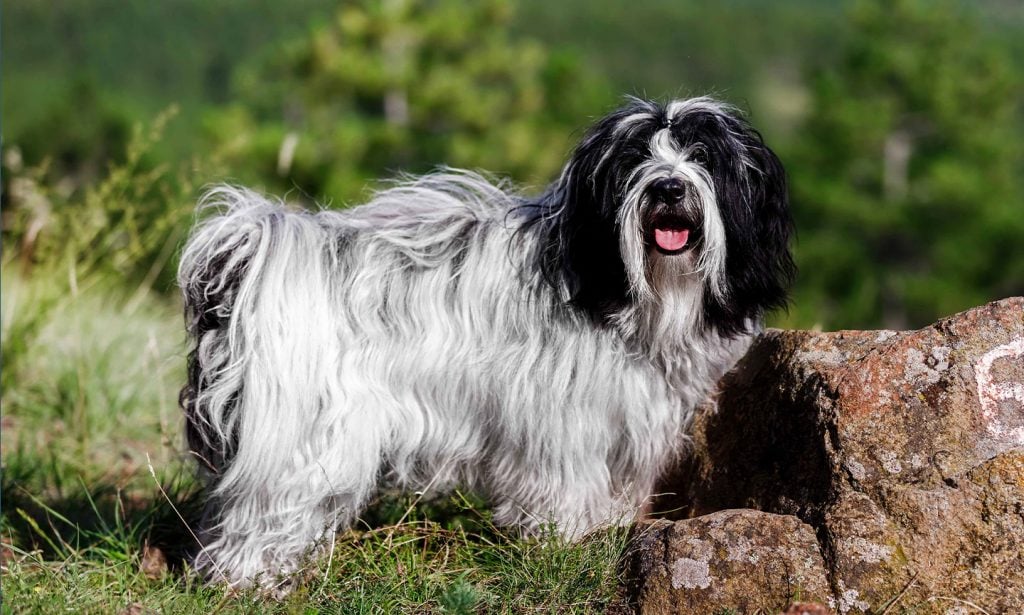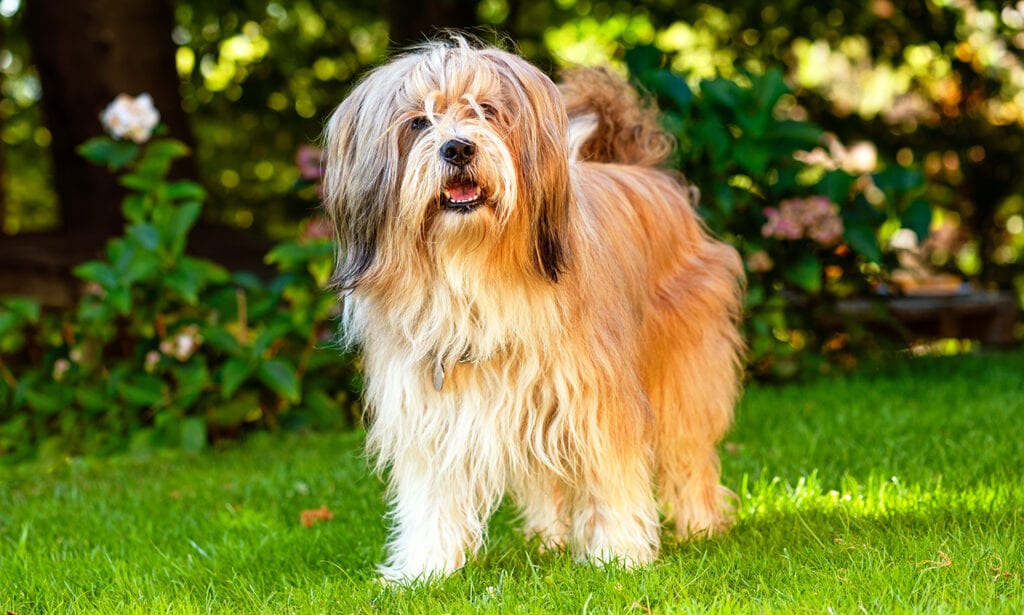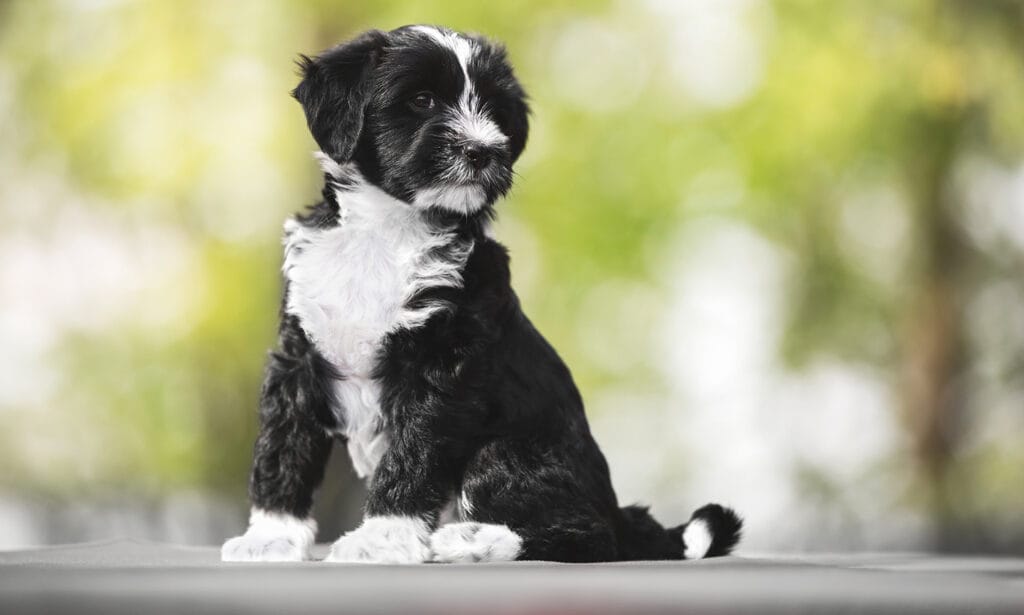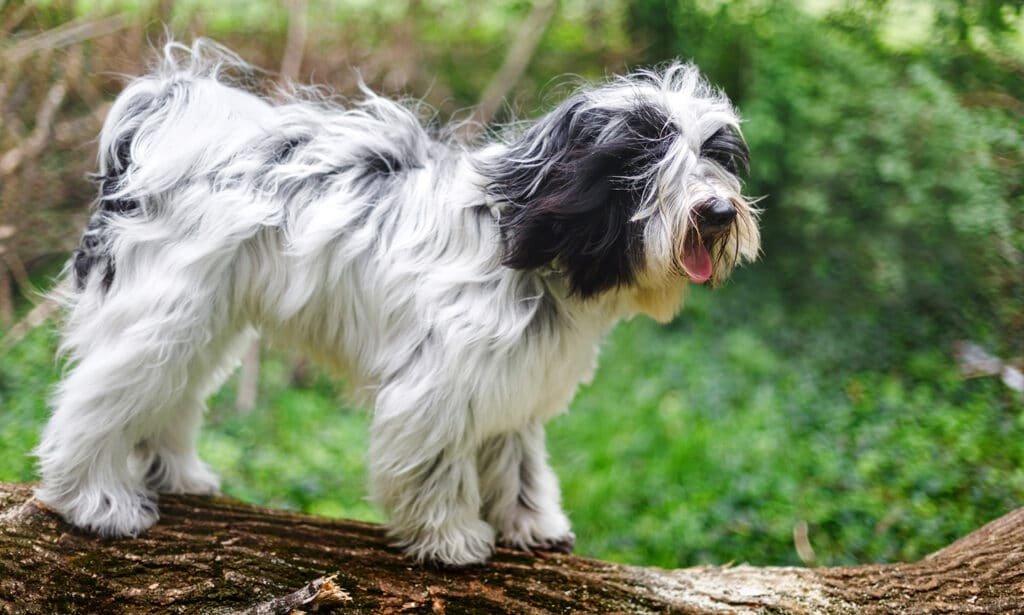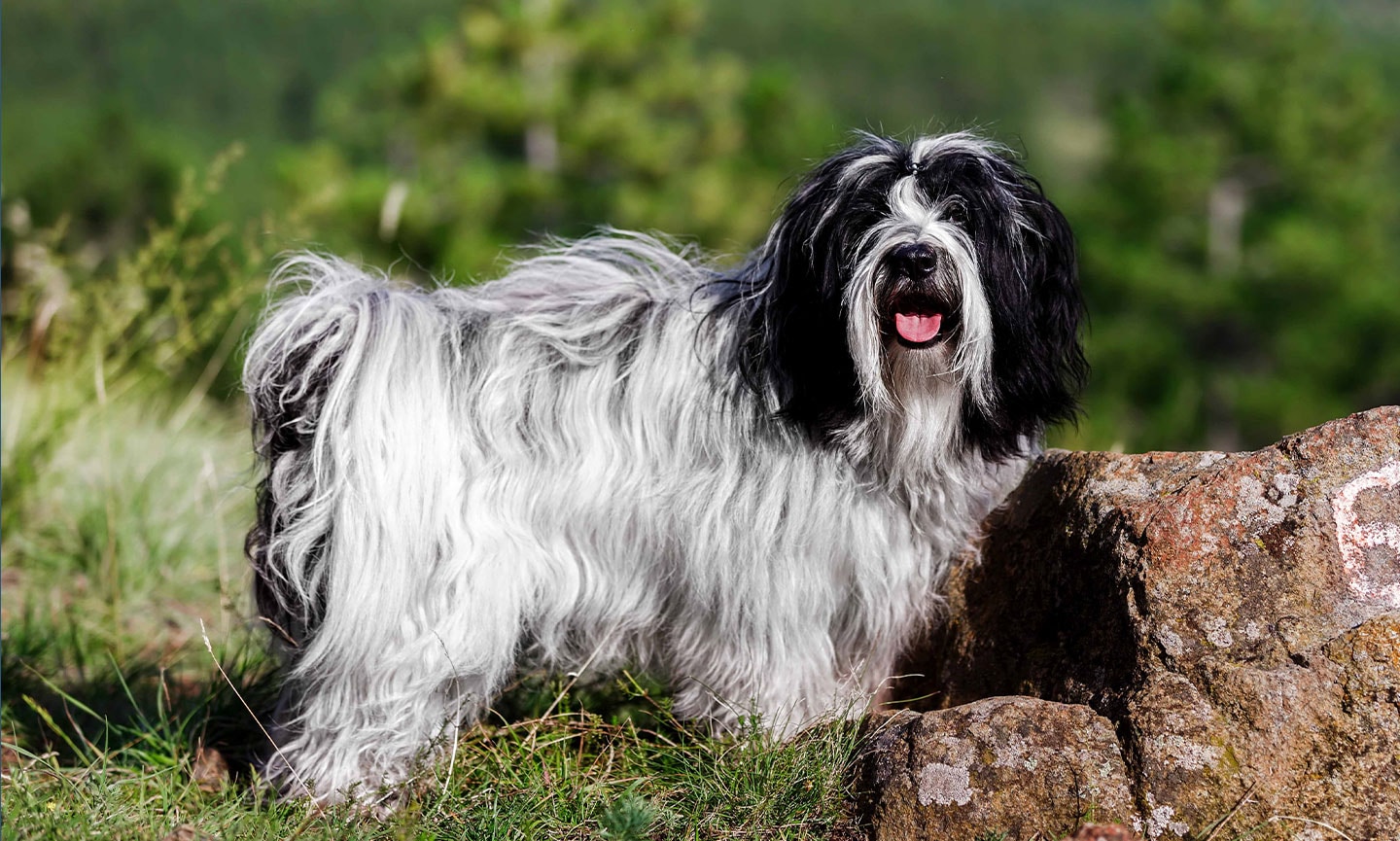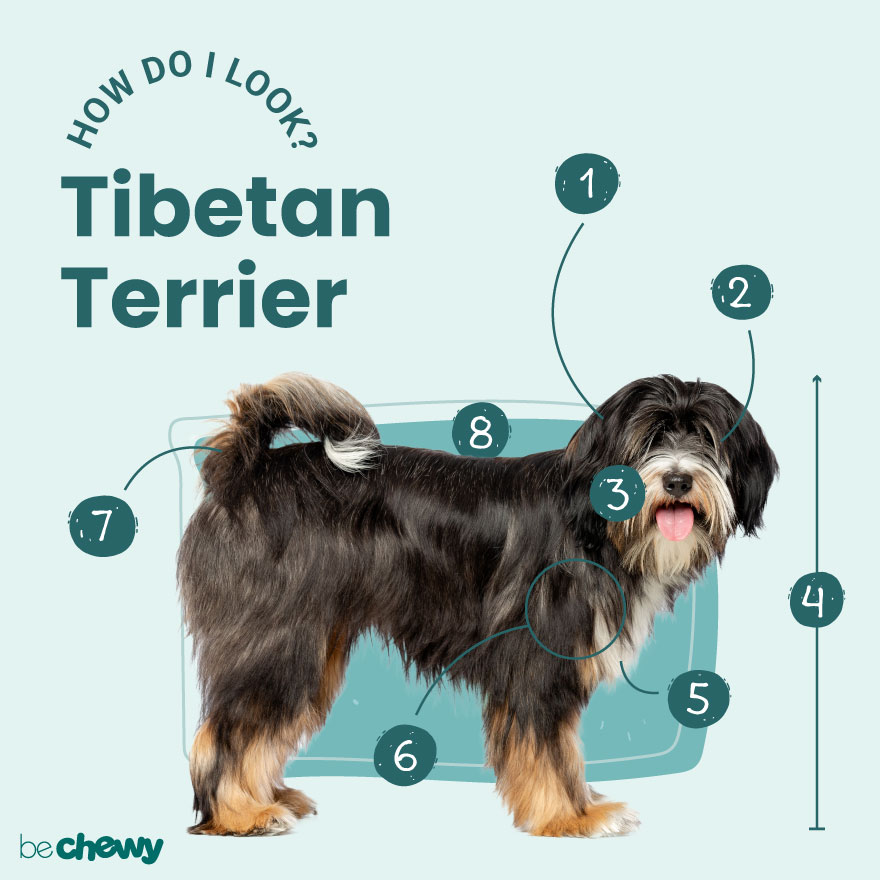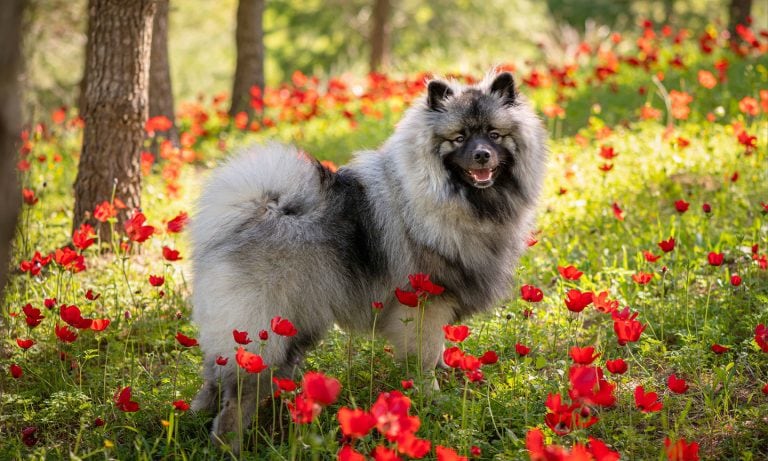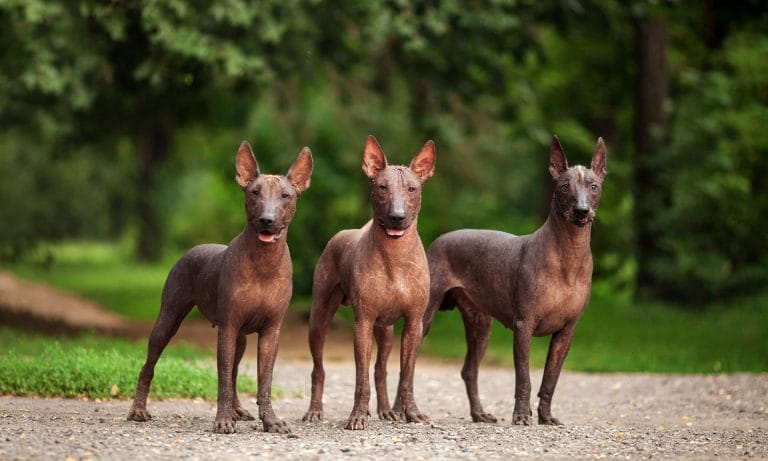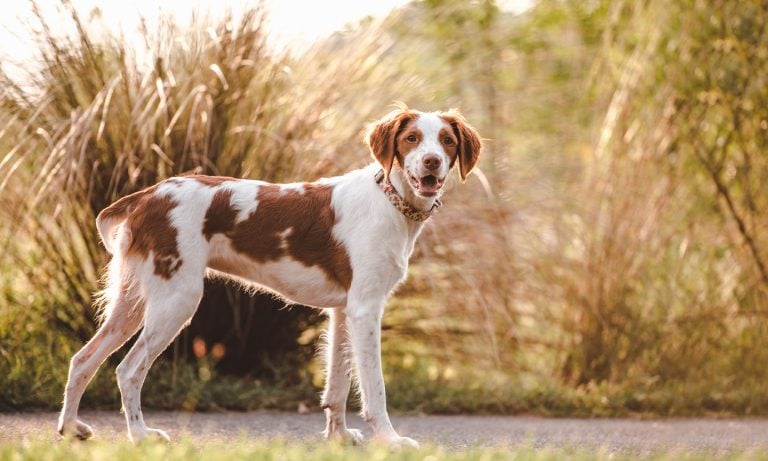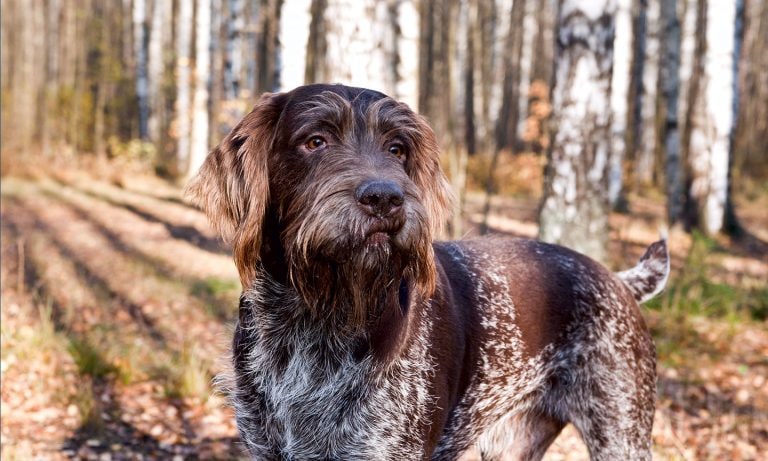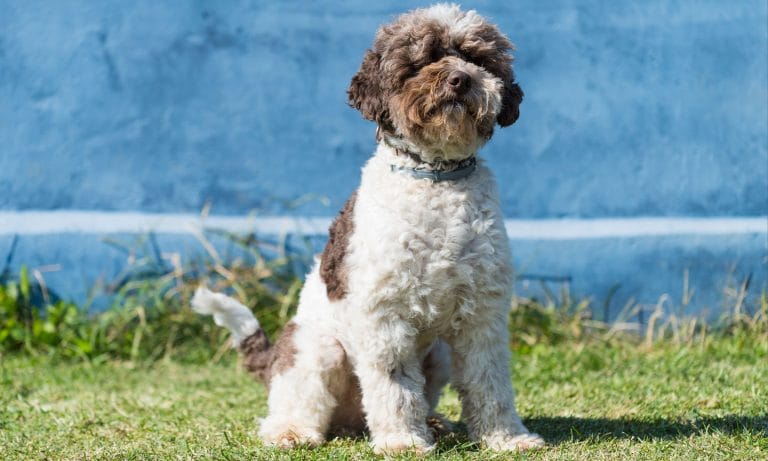The Tibetan Terrier was originally a companion to Buddhist monks, so by welcoming one into your home, you’ll have an ready-made—and hopelessly devoted—sidekick. This dog is ready to be your shadow, whether you’re binging Netflix, strolling down the sidewalk or hiking in the hills. These easy going pups will also give you a reason to get out and moving, especially on cold, snowy days. The Tibetan Terrier was made for winter, and you won’t want to miss the joy of your dog frolicking in their beloved snow. Dress warmly, because their double coat of fur means your fingers will be numb before your pup’s ready to go home.
Breed Snapshot
Temperament:
AdaptableAdoringSensitiveCoat Color:
BlackBlack And WhiteBlack White And GoldWhite And GoldGold And WhiteGolden BrindleWhiteWhite And BlackSableBrindleGold
Best For
The Tibetan Terrier is whole-heartedly devoted to their family. Originally a companion to Buddhist monks, these extremely intelligent and friendly pups are highly adaptable, burst with personality and thrive with pet parents who can provide plenty of socialization training.
Tibetan Terrier Temperament
The Tibetan Terrier packs plenty of enviable traits into their personality, including funny, mischievous, independent-minded and extremely smart. They’re an interesting combination of toddler and tween, cat and class valedictorian.
With a gentle temperament, the Tibetan Terrier’s biting tendencies are lower than the average dog breed, but be aware that, in their playful youth, they tend to be pretty mouthy and are prone to nibbling. It’s wise to invest in a few chew toys.
The Tibetan Terrier makes a devoted pet and is very compatible with cats and other dogs. They’re great with kids, too, but because Tibetan Terriers are a pretty sensitive breed, they’ll do better with older kids who understand the importance of boundaries and respect for a dog’s space. It’s always advised to supervise any dog breed when playing around toddlers and younger ones. Kids should also be taught how to interact with dogs.
These dogs are friendly, though not quite extroverts, so they can appear pretty standoffish and aloof to guests in the home. On the other paw, this ancient breed evolved as alert dogs for Buddhist monks in monasteries, so their instinct is to bark whenever someone approaches the door. But, as you now know, their bark is worse than their bite!
How to Care for a Tibetan Terrier
As you care for your Tibetan Terrier, plan on dedicating a lot of time for maintaining their coat and exercising your pup. With their double coat and extremely long fur, you’ll spend about 15 minutes every day brushing their gorgeous locks. These high-energy pups also need daily exercise to keep them well-behaved members of society. They’re a delight to train, giving you a great outlet to help engage their brains and their bodies.
Tibetan Terrier Health
Tibetan Terriers have a lifespan of 15-16 years and are generally a very healthy breed. But like all dogs, the Tibetan Terrier can be prone to certain health issues. That’s why it’s so important to work with a reputable breeder who screens for conditions common to the breed. DNA testing prior to breeding and assessing the health of prospective parents can help avoid these common health problems.
- Neuronal Ceroid Lipofuscinosis (Lipid Storage Neurological Disease): This is an inherited degenerative neurological disease that may impair vision and balance, cause aggressive behavior or even trigger seizures. There is currently no treatment for the condition, although research is ongoing into potential therapies. Genetic testing is available to screen for this disease.
- Hip Dysplasia: Hip dysplasia occurs when the hip joint doesn’t form properly as a dog grows, leading to looseness in the joint. This can cause pain and lameness, and lead to degenerative joint disease. Treatment with medication, joint supplements, weight management and physical therapy can often greatly improve their quality of life. In severe cases, surgery may be recommended.
- Primary Lens Luxation: This inherited disease causes the lens of the eye to detach from its normal position, leading to pain, inflammation and potential secondary glaucoma. Always watch for painful, red and teary eyes, especially if they look cloudy or hazy. See your vet annually for an eye exam to catch problems early. If detected early, surgery and medication can help prevent further complications.
- Progressive Retinal Atrophy: With this inherited disease, the retina slowly degenerates, leading to progressive vision loss and eventually blindness. Regular eye exams with your vet are essential to catch the problem, which may not have any obvious symptoms. Unfortunately, there is no treatment for this disease, but a dog who loses vision can still lead a happy and full life. There is a test available to screen dogs for this gene prior to breeding.
- Diabetes Mellitus: Tibetan Terriers are prone to developing diabetes mellitus, which occurs when the pancreas fails to produce adequate amounts of insulin. This leads to elevated blood sugar levels, which can lead to other problems including weight loss, increased thirst and urination, urinary tract infections, and the formation of cataracts. Careful observation is necessary to catch signs of this disease early on.
- Patellar Luxation: Patellar luxation is a condition that occurs when the kneecap moves in and out of its normal position. Although this sounds uncomfortable, most dogs tolerate the problem well and do not require treatment for the condition. In severe cases, surgical correction may be recommended.
Tibetan Terrier History
Often called the “Holy Dog of Tibet,” the Tibetan Terrier is an ancient breed with a long history. The breed evolved over 2,000 years ago as a watchdog and good luck charm for Buddhist monasteries on the cold, wind-swept plains of Tibet. With their wise eyes, sensitivity and slightly mischievous nature, it’s easy to imagine that this luck bringer connected, somehow, to the Dali Lama himself!
Because they were originally bred as companions and watchdogs for monks, they make devoted companions for modern pet parents, even if you’re sitting on the sofa rather than a zafu.
The Tibetan Terrier first came to the West thanks to a British surgeon, Dr. Agnes Greig, who lived in northern India in the 1920s. After performing life-saving surgery on a Tibetan woman, Dr. Greig received a Tibetan Terrier as a thank you gift. She became so enamored of her dog—and really, who wouldn’t?—that she started her own breeding program when she returned to England. By the 1950s, two dogs from her program were brought to the US, and by 1973, the American Kennel Club (AKC) had recognized the Tibetan Terrier.
So what’s the best way to bring a Tibetan Terrier into your life? Start with a reputable breeder on the AKC’s website or contact one of the 16 breeders (yes, just 16!) listed with the Tibetan Terrier Club of America. The cost of a Tibetan Terrier puppy from a reputable breeder is around $2,500—but the value of bringing one into your life is priceless. For that price you usually get a dog who’s been screened for health and temperament issues, and they might even come with pedigree papers. You can also adopt a dog through a Tibetan Terrier rescue program, or search Chewy’s database of adoptable dogs in your area.
FAQs
Do Tibetan Terriers shed?
Tibetan Terriers don’t shed much for most of the year, but in the spring and fall, they do blow their coats (shed in chunks of fur).
When do Tibetan Terriers calm down?
While Tibetan Terriers have a higher energy level in their early years, they do tend to calm down when they’re around 2 years old.
Are Tibetan Terriers good family dogs?
Yes, Tibetan Terriers make great family dogs and are good with kids, adults and other dogs when socialized properly. It’s also important to teach kids how to interact with dogs.
Do Tibetan Terriers bark a lot?
Tibetan Terrier dogs are pretty average barkers compared to other breeds. While they won’t typically bark just to hear themselves bark, they did evolve as alert dogs for Buddhist monasteries. That means they will bark, perhaps with abandon, to alert you when something is going on.
What are the most common Tibetan Terrier mixes?
- Tibetan Terrier-Poodle mix (Ttoodle)
- Tibetan Terrier-Lhaso-Apso mix (Tibetan Terrier-Lhaso-Apso)
- Tibetan Terrier-Maltese mix (Tibetan Terrier-Maltese)
- Tibetan Terrier-Jack Russell mix (Tibetan Terrier-Jack Russell)
- Tibetan Terrier-Schnauzer mix (Tibetan Terrier-Schnauzer)
Note: These are not purebred dogs but mixed breeds.
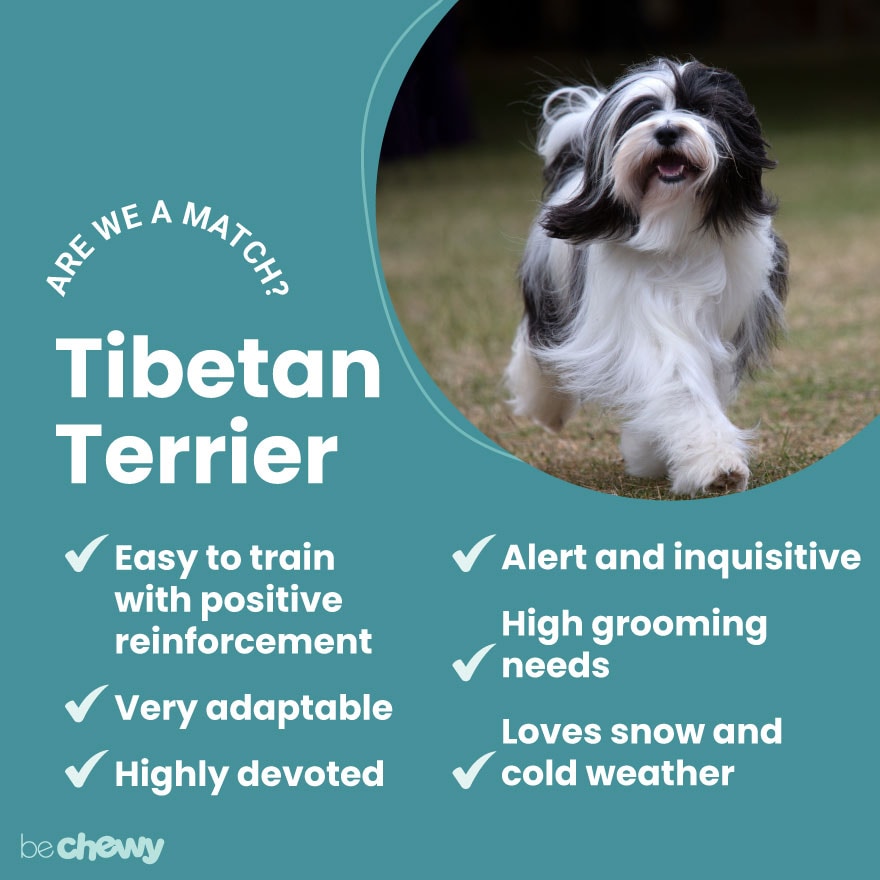
Top Takeaways
If you’re looking for a devoted dog who will join you in whatever you want to do, look no further than the Tibetan Terrier. This adaptable dog can live anywhere from an urban apartment to a large suburban house with a big fenced-in yard. They’ll happily spend their day with you, whether you like climbing rugged trails or lounging by the fireplace and reading a book. Just be sure you have ample time—and desire—to devote to regular grooming.
Expert input provided by Stacey La Forge of Tibetan Terrier Club of America, Inc. and Tibetan Terrier Health & Welfare Foundation; Dr. Jessica Bell, DVM, Clinical Assistant Professor and Dr. Briah Tannler, DVM, Clinical Instructor, Community Practice, Washington State University Veterinary Teaching Hospital, Pullman, Washington; and Jody Haas Wolfson, Cpdt-KA, dog trainer and canine behaviorist at Root Dog Training.
Breed characteristic ratings provided by Dr. Sarah J. Wooten, DVM, CVJ, a veterinarian at Sheep Draw Veterinary Hospital in Greeley, Colorado; dog trainer and behavior consultant Irith Bloom, CPDT-KSA, CBCC-KA, CDBC, owner of The Sophisticated Dog, LLC, in Los Angeles; and certified animal behavior consultant Amy Shojai, CABC, in Sherman, Texas.
The health content was medically reviewed by Chewy vets.

Search for Adoptable Tibetan Terriers Near You
Female Names
- Gracie
- Lola
- Coco
- Maya
- Winnie
- Tashi
- Holly
- Sadie
- Olive
- Kimba
Male Names
- Milo
- Teddy
- Murphy
- Archie
- Bodhi
- Cody
- Max
- Rocco
- Bob
- Toby
Share:
